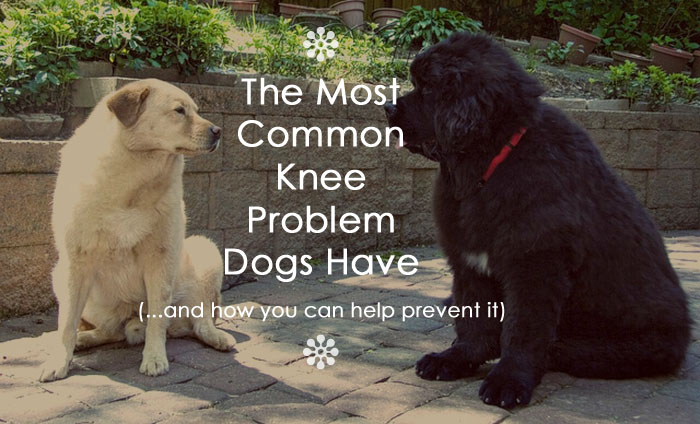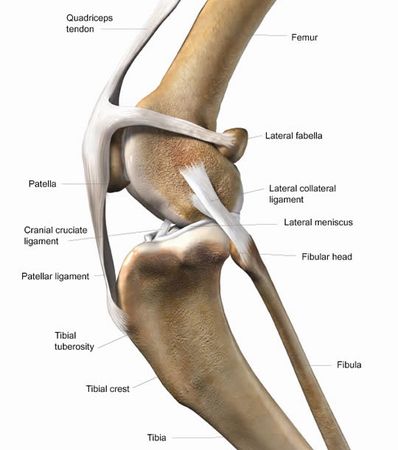
(…even in big dogs!)
Today’s veterinary clinics see a lot of mobility problems especially in larger breeds. Is there anything we can do? In large and/or overweight dogs such as Newfoundlands, Mastiffs, St. Bernards, etc., joints are simply overworked and give out, and can result in further problems and the dog not being able to put much, if any, weight on its leg.

Healthy joints are the best protection. There is much information available which discusses (very expensive) surgical and non-surgical treatments, but let’s have a look at nutrition and prevention. The right nutrition can help maintain cartilage and connective tissue as well as healthy joint function.
What is missing from a dog’s diet that would negatively impact joint health?
Nutrient Deficiency
Healthy ligaments in dogs don’t just tear for no reason. Veterinarians often see dogs in their clinics that have ligament ruptures or tears, yet have not experienced some form of trauma, such as getting hit by a car or falling from a height, etc.
“Fat or out of shape dogs tax their ligaments more than thin dogs, but my patients weren’t fat or out of shape. They were active, healthy animals. They weren’t over-vaccinated, and they weren’t de-sexed. That left nutrition as a possible cause for the vast majority … I was seeing in practice.” (Read more here)
Karen Shaw Becker, DVM
In research that Dr. Becker has done, in the context of her years of veterinary practice, she has discovered that a crucial element has been missing from the diet of these joint patients …a lack of manganese. Dogs require a high level of manganese, yet processed pet food and less than carefully prepared diets (including raw) do not contain enough manganese to support a dog’s joints.
“So where does manganese come from in the ancestral diet? Minute amounts come from meat, liver and bone, but not nearly enough to meet a dog’s daily requirements (and hence why so many dogs become manganese deficient). The richest source of manganese comes from the animal pieces and parts none of us feed, primarily hair, feathers and wool.”
Karen Shaw Becker, DVM
Prevention
An ancestral diet (whole prey animal) might average 3.1 mg of manganese per 1000 kcal (calories). This is very supportive of ligaments and joints. Since most people, even those that feed their dog raw meat and organs, are not in the habit including prey animal hair, feathers or wool to their dog’s food, proper levels of manganese must come from other sources. Those that feed only kibble to their dogs are providing an even lower amount of manganese, well below what is necessary to support joint health.
Joint health and connective tissue health can be supported through diet. Nutrition is required for joint health and can help maintain joint mobility and function. Nutrition, in tandem with proper exercise and fitness, helps support the structural integrity of joints and connective tissues. Manganese is a key nutritional element required for joint health.
BioVITES and BioJOINT are products which promote healthy joints, and both provide in abundance the manganese and other nutritional elements that your dog needs to support healthy hip and joint health throughout its lifespan. If you want to help your dog prevent unfortunate and unnecessarily conditions or you want to support normal recovery and return of strength post-surgery, please contact us for more information about how these supplements can serve your dog’s joint and overall health.
